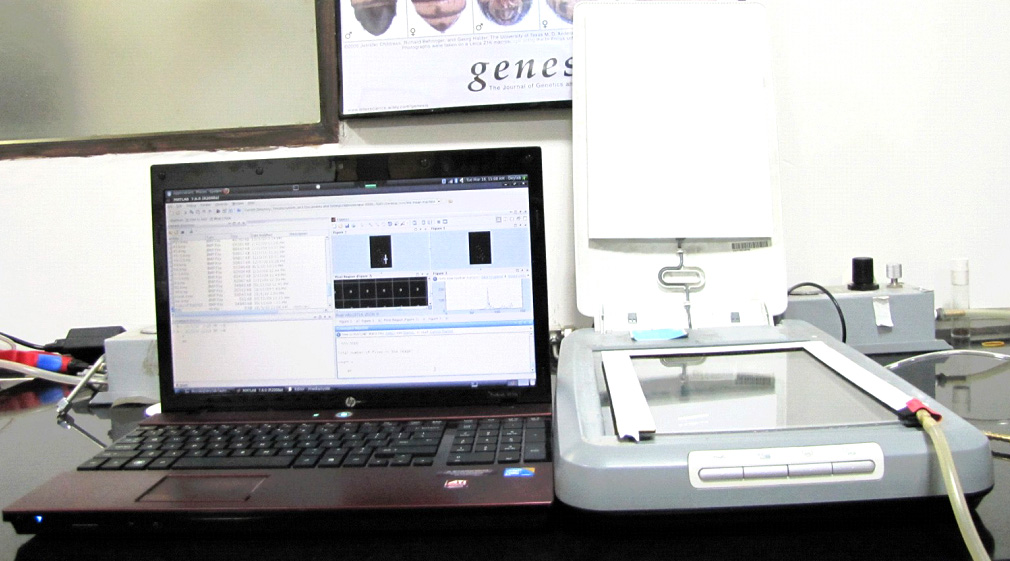
Experimental set-up: A transparent acrylic sheet is placed on the scanner bed. Along the sides of the sheet is a rubber channel connected to carbon dioxide supply at one end. The gas passes through regularly placed holes on the channel. This arrangement keeps the flies anesthetized while scanning. The scanned image is then passed on to the FlyCounter software which analyzes the image to determine the number of flies.
Anesthetized flies typically form clumps due to the sticky nature of bristles on their body and this can hamper accurate estimation of the number of flies. The code for FlyCounter has been written such that it can identify the total number of connected objects in an image, distinguish between single objects and clumps based on an area distribution analysis, and finally calculate the possible number of objects in each clump to give us an estimate of the total number of objects, in this case flies. Thus, the advantage of this software lies in its ability to (figuratively) release the clumps into individual objects to obtain a nearly-accurate estimate of the total number of objects. The authors test FlyCounter at different levels of clumping and compare the number of flies estimated by FlyCounter with that determined manually and with another image-analysis-software. Their results show that FlyCounter performs closer to the manual counting process and is far less prone to errors. “An important feature of this software is the size range in which it can be used—0.5 to 5 mm and the fact that the counting is robust to variation in particle size. This at once makes this method applicable to not just fruit flies but to many other organisms and objects as well,” says Dey pointing to the larger relevance of the method. FlyCounter software is free and can be downloaded from here. (http://www.iiserpune.ac.in/~s.dey/pbl/BT/flycounter.htm). The study titled “FlyCounter: a simple software for counting large populations of small clumped objects in the laboratory” is authored by Arpit Yati and Sutirth Dey and has appeared as a Benchmark article in BioTechniques (51:348-349). -Reported by Shanti Kalipatnapu

